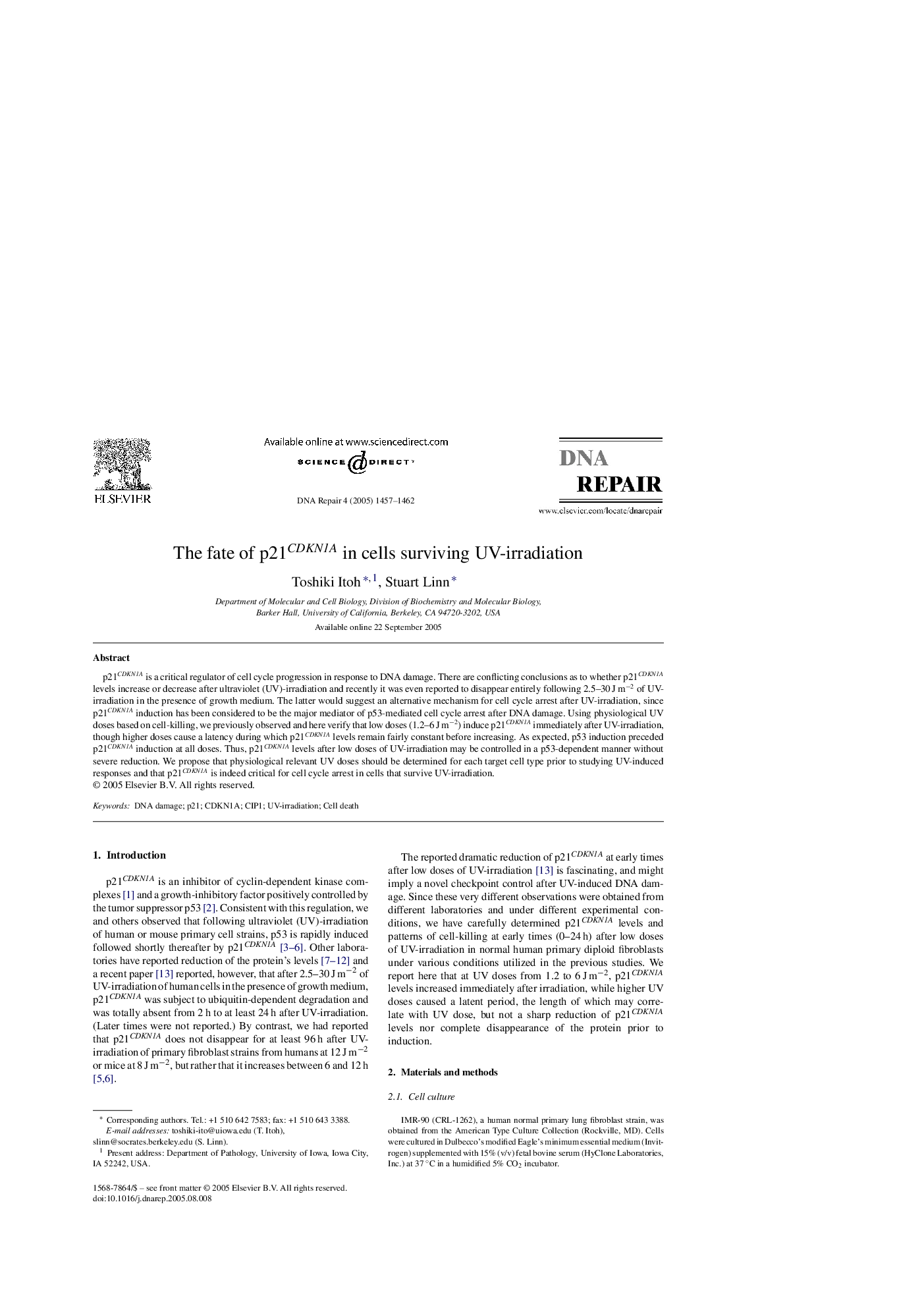| Article ID | Journal | Published Year | Pages | File Type |
|---|---|---|---|---|
| 10823961 | DNA Repair | 2005 | 6 Pages |
Abstract
p21CDKN1A is a critical regulator of cell cycle progression in response to DNA damage. There are conflicting conclusions as to whether p21CDKN1A levels increase or decrease after ultraviolet (UV)-irradiation and recently it was even reported to disappear entirely following 2.5-30Â JÂ mâ2 of UV-irradiation in the presence of growth medium. The latter would suggest an alternative mechanism for cell cycle arrest after UV-irradiation, since p21CDKN1A induction has been considered to be the major mediator of p53-mediated cell cycle arrest after DNA damage. Using physiological UV doses based on cell-killing, we previously observed and here verify that low doses (1.2-6Â JÂ mâ2) induce p21CDKN1A immediately after UV-irradiation, though higher doses cause a latency during which p21CDKN1A levels remain fairly constant before increasing. As expected, p53 induction preceded p21CDKN1A induction at all doses. Thus, p21CDKN1A levels after low doses of UV-irradiation may be controlled in a p53-dependent manner without severe reduction. We propose that physiological relevant UV doses should be determined for each target cell type prior to studying UV-induced responses and that p21CDKN1A is indeed critical for cell cycle arrest in cells that survive UV-irradiation.
Related Topics
Life Sciences
Biochemistry, Genetics and Molecular Biology
Biochemistry
Authors
Toshiki Itoh, Stuart Linn,
